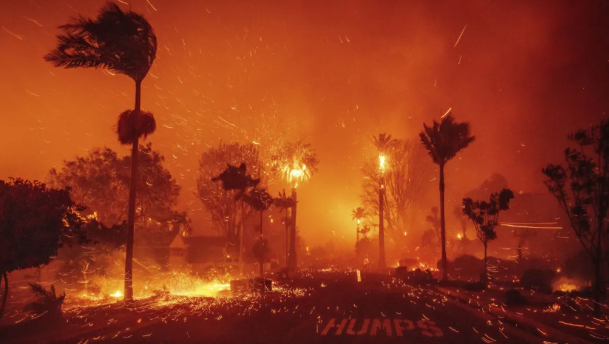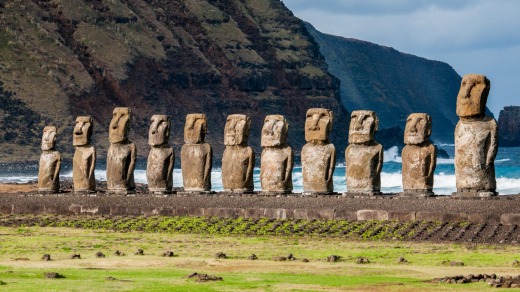Five Places to Appreciate Before They are All Gone

Five beautiful endangered landscapes
October 26, 2016
Sea levels are predicted to rise 20 inches in the next century, and those encroaching waters may mean the end of small island nations that reside at sea level. Coral reefs, home to about 25 percent of all marine species, are dying around the world as rising ocean temperatures have led to mass coral bleaching events. LA Times explains, “Melting glaciers are significantly changing the landscape take, for example, Alaska’s Muir Glacier, which was a mountain of ice in 1941 but now has a melted valley filled with ocean water.”
Whether it’s rising sea levels, desertification, torrential monsoons, melting glaciers or ocean acidification, climate change is rapidly altering the landscape of our planet. We may be one of the last generations to witness some of the Earth’s most cherished places. Here are 5 places that are threatened to disappear altogether.
Easter Island
Where: Chile
For the first landmark Huffington Post reporter Kathleen Squires states, “Known for its famous 887 moai carved monolithic statues, Easter Island’s future may be compromised by a fading culture. The remote island has a small population of 5,000, of which fewer than half are Rapa Nui (the indigenous people of the island), according to a 2012 study done by The Berkeley Planning Journal.” Recent developments, such as the opening of a new luxury eco-resort last year, also have locals concerned about a tourism influx; so much so, there is a movement afoot to limit numbers. Visit before you need a reservation, and see the island’s ancient petroglyphs, cave paintings, and moai, or do some extraordinary diving.
Machu Picchu and Choquequirao
Where: Peru
Development will greatly affect the remains of the ancient civilization of Choquequirao, known as “the other Machu Picchu.” The Peruvian government recently announced the building of a 3-mile cable car to Machu Picchu’s “sister city.” As a result, tourism will explode from five visitors a day to 3,000 when it opens in 2015. The intent of the tramway is to ease the burden on Machu Picchu, which already limits visitors to 2,500 daily and requires reservations to hike the famed Inca Trail. A journey to either of these ancient cities will allow visitors to take in stunning mountain landscapes and impressive ancient architecture.
Great Barrier Reef
Where: Australia
As one of the world’s premier diving sites, the Great Barrier Reef is suffering from rising ocean temperature, water pollution, and fishing, which are causing erosion to the largest coral reef in the world. According to the Intergovernmental Panel on Climate Change, the rate of disintegration to the 7,000-year-old reef is unprecedented; some scientists say that it could be dead within the next 40 years, taking a significant amount of sea life along with it. Islands’ with such a unique and spectacular array of coral, fish, and other marine life, travelers should put this on their must-see list. But when visiting be sure to look and not touch—the coral is easily damaged.
Culebra and Vieques
Where: Puerto Rico
Though both islands, tiny paradises off the east coast of Puerto Rico, have triumphed over the US Navy by halting bombing drills that were compromising the environment, the current threat involves overdevelopment. Since the W Resort moved into Vieques in 2010, other properties have been eyeing both islands. Locals worry Puerto Rico’s dismal economics will trump their efforts to maintain the island’s “unspoiled” charms. Respect the island’s’ natural calm and enjoy environmentally-friendly activities like kayaking in the bioluminescent bay off Vieques, or snorkeling off Playa Carlos Rosario in Culebra for views of a fabulous coral reef.
Dead Sea
Where: Israel and Jordan
When border countries began to divert water from the Dead Sea’s main tributary 50 years ago, the famous, salty, buoyant body began to evaporate, sinking about three feet a year, according to studies by the Israeli government. The suggested answer: the “Red-Dead” project, which will channel the Red Sea into the Dead Sea. Local environmentalists, FoEME (Friends of the Earth Middle East) claim that the project will irrevocably compromise the Dead Sea’s ecosystem. Either way, if a solution isn’t put into place, the famed sea could dry up within the next 40 years. Get here before it’s gone to enjoy a fun float in this sea (30 percent saline).
These five natural wonders are endangered because of pollution, climate change, and development. For the time being, the five landmarks will stay unique and also eccentric. So visit them before they are all gone.



































